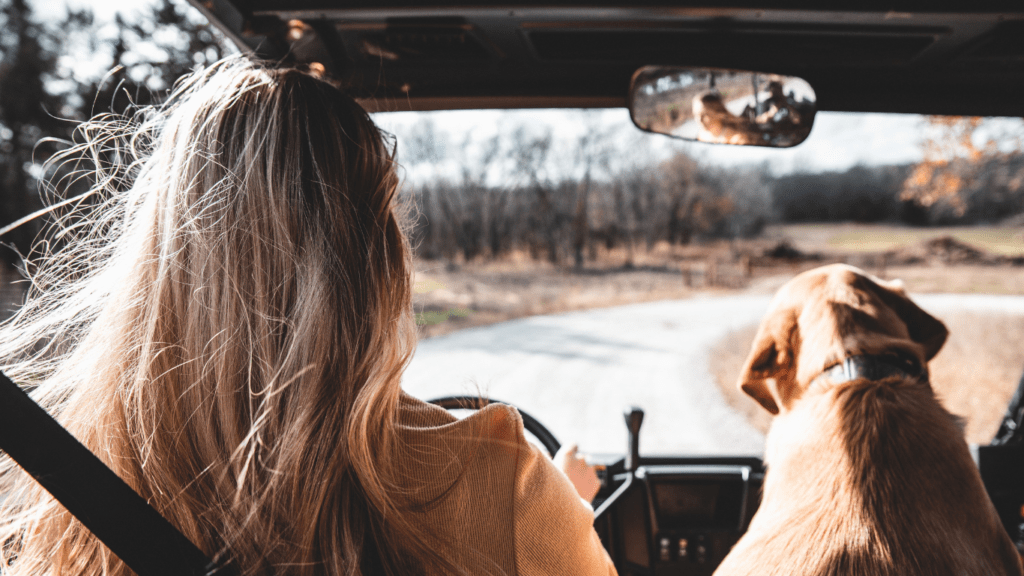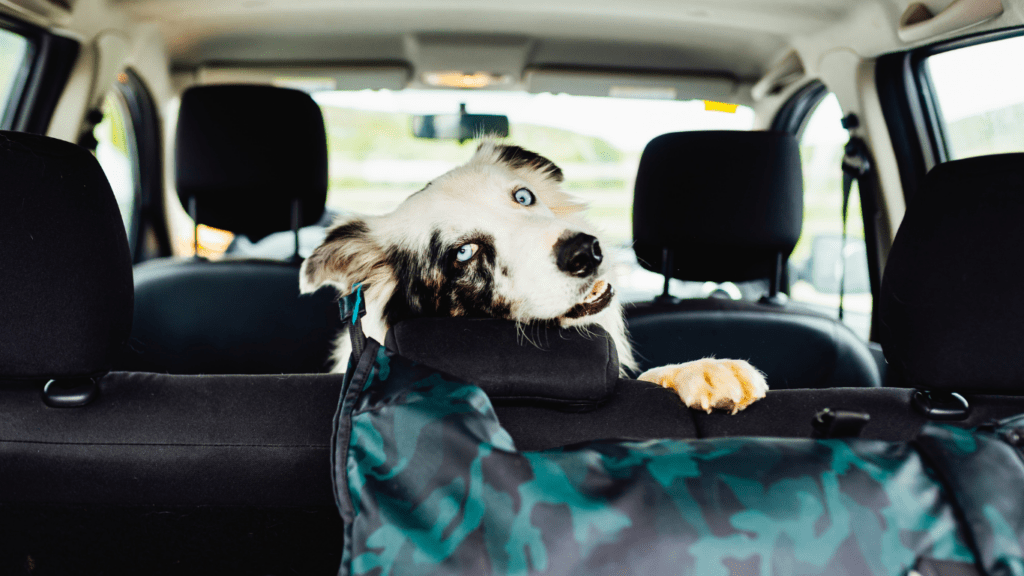Preparing for the Journey
Ensuring your pet’s well-being during travel starts with proper preparation. Follow these steps to make the journey safe and comfortable for both of you.
Visit the Vet
Schedule a vet visit before your trip to ensure your pet’s health. Get updates on vaccinations, obtain a health certificate if required, and discuss any potential travel-related stress or anxiety. Ask for recommendations on pet-calming products like pheromone sprays or medications. Ensure your pet’s microchip information is up-to-date and verify identification tags are attached securely.
Gather Essential Supplies
Pack essential supplies to keep your pet comfortable. Bring enough pet food for the duration of your trip, plus a few extra days’ worth. Include a water bowl, waste bags, grooming tools, and any prescribed medications. Add familiar items such as a favorite blanket, toys, and chew items to reduce stress. Include a basic pet first-aid kit with items like:
- bandages
- antiseptic wipes
- tweezers
Choose the Right Carrier
Select a carrier that suits your pet’s size and comfort. For air travel, ensure the carrier meets airline requirements. Choose carriers with proper ventilation, secure latching mechanisms, and a soft interior. Line the carrier with absorbent materials to handle any accidents and attach a label with your contact information. Familiarize your pet with the carrier before travel by allowing them to spend time inside it at home.
Transportation Safety
Ensuring transportation safety is vital when traveling with pets. I’ll cover effective tips for car travel, air travel, and public transport to keep your pet secure and comfortable.
Car Travel Tips
- Secure the Carrier: Use a seatbelt to fasten the pet carrier. This prevents it from sliding or tipping during sudden stops.
- Frequent Breaks: Stop every 2-3 hours. Let your pet stretch, hydrate, and relieve themselves.
- Temperature Control: Maintain a comfortable temperature inside the car. Never leave your pet alone in a parked vehicle.
- Restrain Your Pet: Use a pet seatbelt or barrier. This minimizes distractions and keeps your pet safe in case of abrupt movements.
Air Travel Guidelines
- Choose Direct Flights: Reduce layovers and minimize stress by selecting direct flights whenever possible.
- Use Airline-Approved Carriers: Ensure the carrier meets the airline’s specifications. It should be well-ventilated, secure, and comfortable for your pet.
- Book Early: Reserve space for your pet in advance. Airlines have limited pet spots, especially during peak travel seasons.
- Pre-Flight Preparation: Familiarize your pet with the carrier before the flight. This reduces their anxiety and helps them adjust to their temporary space.
Public Transport Considerations
- Check Regulations: Look up the pet policies of the transportation service in advance. Different carriers have varying rules regarding pet travel.
- Leash and Muzzle: Keep your pet on a leash or use a muzzle if required. This ensures your pet’s safety and the comfort of other passengers.
- Select Off-Peak Hours: Travel during less crowded times. This reduces stress for your pet and makes the journey more pleasant for everyone.
Stay Alert: Monitor your pet closely during the trip. Look out for signs of distress and intervene promptly.
By following these transportation safety tips, you can ensure a smooth and secure journey for your pet, making your travel experience enjoyable and stress-free.
Comfort and Well-being

Ensuring your pet’s comfort and well-being during travel is essential for a smooth journey. Several factors contribute to creating a pleasant experience for your pet and minimizing stress.
Regular Breaks
Pets need regular breaks to stretch, relieve themselves, and burn off some energy. For road trips, stop every two to three hours. Always use a leash when letting your pet out at rest stops.
Hydration and Feeding
Maintaining your pet’s hydration is crucial. Offer water every couple of hours, especially in warm weather. Pack a portable water bowl for convenience. Feed your pet a light meal two to three hours before traveling. Avoid feeding them in a moving vehicle to prevent motion sickness.
Managing Anxiety and Stress
Some pets may experience anxiety while traveling. Familiarize your pet with their carrier before the trip. Use calming aids like pheromone sprays if necessary. Consult your vet regarding stress management options like anxiety wraps or mild sedatives if your pet shows severe anxiety symptoms.
Accommodations
Finding suitable accommodations ensures a comfortable stay for you and your pet.
Pet-Friendly Hotels
Select pet-friendly hotels that offer amenities for pets. Websites like BringFido and PetsWelcome list hotels that accept pets. Confirm pet policies in advance, including any fees or restrictions. Some hotels provide pet beds, bowls, and designated walking areas. For example, Kimpton Hotels and Best Western are known for their pet-friendly policies.
Renting Vacation Homes
Vacation rentals can offer a more relaxed environment. Utilize platforms like Airbnb and Vrbo, which have filters to identify pet-friendly properties. Look for listings with secure yards or nearby parks. Verify house rules with the host and ensure the space meets your pet’s needs. Always check for nearby vet services in case of emergencies.
Staying with Friends or Family
When staying with friends or family, communicate your pet’s needs in advance. Ensure they are comfortable with pets and discuss any house rules. Bring your pet’s bedding, toys, and food to maintain their routine. Consider their existing pets and whether they will get along to avoid conflicts.
Activities and Exploration
When traveling with your pet, engaging in activities and exploring new areas can be both fun and enriching for you and your furry friend.
Safe Outdoor Adventures
Outdoor adventures offer great opportunities for exercise and bonding. Ensure the safety of these activities by choosing pet-friendly parks, trails, and beaches. Verify that the locations allow pets and have the necessary amenities like water stations and waste disposal bags. Use a sturdy leash and harness to prevent your pet from wandering off. Pack essentials such as water, collapsible bowls, and snacks. Monitor your pet for signs of fatigue or overheating, especially in hot climates.
Visiting Pet-Friendly Attractions
Exploring pet-friendly attractions can make your trip more enjoyable. Identify museums, historic sites, and restaurants that welcome pets. Check the attraction’s pet policy in advance to avoid surprises. Many places provide outdoor seating or designated pet areas. Bring comfort items like a blanket or portable bed for your pet to rest. Always carry waste bags to maintain cleanliness and follow local regulations.



 Founder & Pet Wellness Advocate
As the visionary founder of Pet Paw Shack, Kimberliene Sabinin is passionate about helping pet owners provide the best care possible for their furry companions. With a background in veterinary science and animal nutrition, Kimberliene brings years of experience in promoting pet health, safety, and well-being. Her mission is to empower pet owners with practical knowledge about proper nutrition, behavior training, and overall pet wellness.
Founder & Pet Wellness Advocate
As the visionary founder of Pet Paw Shack, Kimberliene Sabinin is passionate about helping pet owners provide the best care possible for their furry companions. With a background in veterinary science and animal nutrition, Kimberliene brings years of experience in promoting pet health, safety, and well-being. Her mission is to empower pet owners with practical knowledge about proper nutrition, behavior training, and overall pet wellness.
